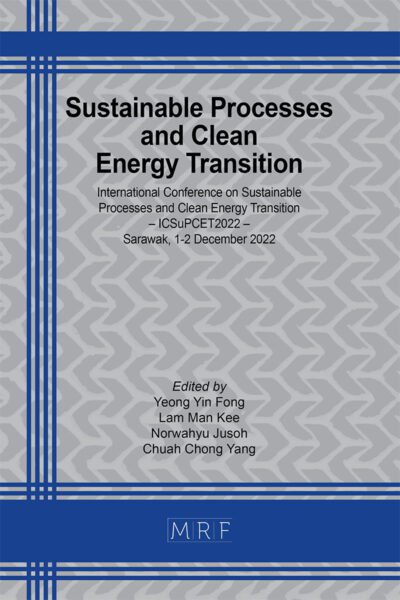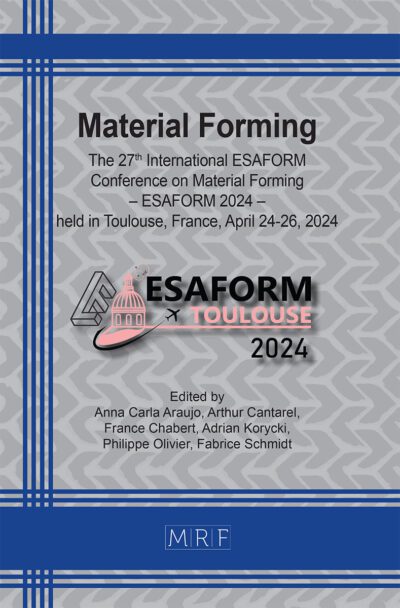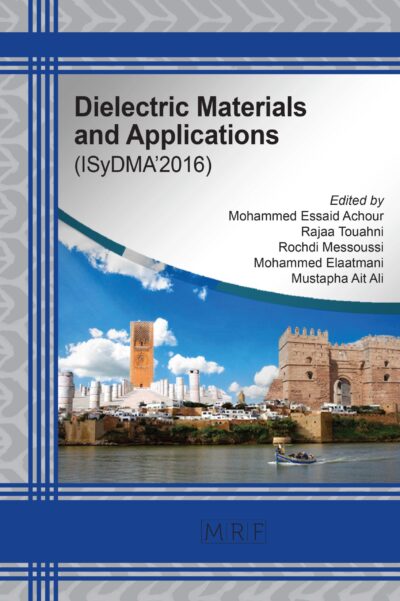Optimization of viscosity of diamond and boron nitride based nanofluids for enhanced thermal management and pumping efficiency
Aymn Abdulrahman
Abstract. The present study investigates optimizing the viscosity of hybrid nanofluids composed of diamond and boron nitride in thermal oil for high-temperature heat transfer applications. Recognizing that higher viscosity equates to increased pumping costs, the study seeks to minimize this critical parameter to enhance the overall efficiency of thermal systems. Employing Response Surface Methodology (RSM) and a desirability function approach, explored the effect of temperature (25°C to 65°C), concentration (0.2 wt.% to 0.6 wt.%), and shear rate (1 to 1000 1/s) on the viscosity of nanofluids. The optimization process pinpointed conditions that yield the minimum viscosity with the highest desirability score, signifying the most advantageous operating scenario. The results showed an optimal balance at a higher temperature and mid-range concentration, culminating in a nanofluid demonstrating Newtonian behavior at low shear rates and shear-thinning attributes at elevated temperatures and shear rates. These findings explain the potential of tailored nanofluids to substantially cut pumping costs while maintaining excellent heat transfer properties, making them ideal candidates for advanced cooling systems in demanding thermal management settings.
Keywords
Nanofluids, Viscosity Optimization, Response Surface Methodology, Thermal Management, Optimization
Published online 4/25/2025, 12 pages
Copyright © 2025 by the author(s)
Published under license by Materials Research Forum LLC., Millersville PA, USA
Citation: Aymn Abdulrahman, Optimization of viscosity of diamond and boron nitride based nanofluids for enhanced thermal management and pumping efficiency, Materials Research Proceedings, Vol. 53, pp 186-197, 2025
DOI: https://doi.org/10.21741/9781644903575-18
The article was published as article 18 of the book Decarbonization Technology
![]() Content from this work may be used under the terms of the Creative Commons Attribution 3.0 license. Any further distribution of this work must maintain attribution to the author(s) and the title of the work, journal citation and DOI.
Content from this work may be used under the terms of the Creative Commons Attribution 3.0 license. Any further distribution of this work must maintain attribution to the author(s) and the title of the work, journal citation and DOI.
References
[1] S. U. Ilyas, R. Pendyala, N. J. C. E. Marneni, and Technology, “Preparation, sedimentation, and agglomeration of nanofluids,” vol. 37, no. 12, pp. 2011-2021, 2014. https://doi.org/10.1002/ceat.201400268
[2] S. K. Das, S. U. Choi, and H. E. J. H. t. e. Patel, “Heat transfer in nanofluids-a review,” vol. 27, no. 10, pp. 3-19, 2006. https://doi.org/10.1080/01457630600904593
[3] Y.-j. Hwang et al., “Stability and thermal conductivity characteristics of nanofluids,” vol. 455, no. 1-2, pp. 70-74, 2007. https://doi.org/10.1016/j.tca.2006.11.036
[4] S. U. Ilyas, R. Pendyala, M. Narahari, L. J. E. c. Susin, and management, “Stability, rheology and thermal analysis of functionalized alumina-thermal oil-based nanofluids for advanced cooling systems,” vol. 142, pp. 215-229, 2017. https://doi.org/10.1016/j.enconman.2017.01.079
[5] S. U. Ilyas, R. Pendyala, M. J. C. Narahari, S. A. Physicochemical, and E. Aspects, “Stability and thermal analysis of MWCNT-thermal oil-based nanofluids,” vol. 527, pp. 11-22, 2017. https://doi.org/10.1016/j.colsurfa.2017.05.004
[6] W. Yu and H. J. J. o. n. Xie, “A review on nanofluids: preparation, stability mechanisms, and applications,” vol. 2012, pp. 1-17, 2012. https://doi.org/10.1155/2012/435873
[7] S. U. Ilyas, S. Ridha, F. A. A. J. C. Kareem, S. A. Physicochemical, and E. Aspects, “Dispersion stability and surface tension of SDS-Stabilized saline nanofluids with graphene nanoplatelets,” vol. 592, p. 124584, 2020. https://doi.org/10.1016/j.colsurfa.2020.124584
[8] J. P. Meyer, S. A. Adio, M. Sharifpur, and P. N. J. H. T. E. Nwosu, “The viscosity of nanofluids: a review of the theoretical, empirical, and numerical models,” vol. 37, no. 5, pp. 387-421, 2016. https://doi.org/10.1080/01457632.2015.1057447
[9] S. S. Murshed, P. J. R. Estellé, and S. E. Reviews, “A state of the art review on viscosity of nanofluids,” vol. 76, pp. 1134-1152, 2017. https://doi.org/10.1016/j.rser.2017.03.113
[10] N. A. C. Sidik, H. Mohammed, O. A. Alawi, S. J. I. C. i. H. Samion, and M. Transfer, “A review on preparation methods and challenges of nanofluids,” vol. 54, pp. 115-125, 2014. https://doi.org/10.1016/j.icheatmasstransfer.2014.03.002
[11] M. Hojjat, S. G. Etemad, R. Bagheri, J. J. I. C. i. H. Thibault, and M. Transfer, “Rheological characteristics of non-Newtonian nanofluids: experimental investigation,” vol. 38, no. 2, pp. 144-148, 2011. https://doi.org/10.1016/j.icheatmasstransfer.2010.11.019
[12] A. Ali et al., “Thermal and Rheological Behavior of Hybrid Nanofluids Containing Diamond and Boron Nitride in Thermal Oil for Cooling Applications,” pp. 1-18, 2023.
[13] A. Ali et al., “Application of Machine Learning Algorithms in Predicting Rheological Behavior of BN-diamond/Thermal Oil Hybrid Nanofluids,” vol. 9, no. 1, p. 20, 2024. https://doi.org/10.3390/fluids9010020
[14] A. B. Mahfouz, A. Ali, M. Mubashir, A. S. Hanbazazah, M. Alsaady, and P. L. J. F. Show, “Optimization of viscosity of titania nanotubes ethylene glycol/water-based nanofluids using response surface methodology,” vol. 347, p. 128334, 2023. https://doi.org/10.1016/j.fuel.2023.128334
[15] R. Prasher, D. Song, J. Wang, and P. J. A. p. l. Phelan, “Measurements of nanofluid viscosity and its implications for thermal applications,” vol. 89, no. 13, 2006. https://doi.org/10.1063/1.2356113
[16] I. M. Mahbubul, R. Saidur, M. A. J. I. J. o. H. Amalina, and M. Transfer, “Latest developments on the viscosity of nanofluids,” vol. 55, no. 4, pp. 874-885, 2012. https://doi.org/10.1016/j.ijheatmasstransfer.2011.10.021














